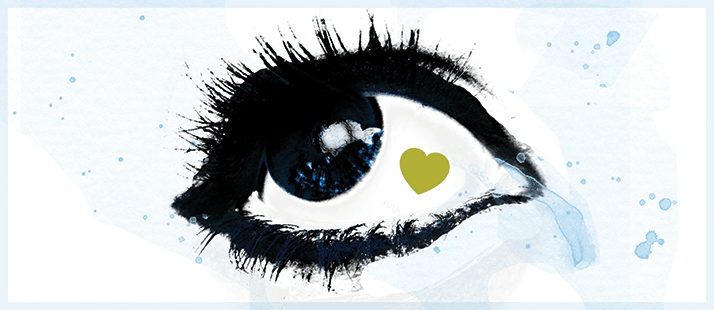
Late last year, widespread media coverage was given to a 25-year old woman from New York, Lucy Luckayanko, who had a heart-shaped platinum implant placed just under her conjunctiva via a tiny, self-sealing incision. She was the first person to undergo the “Safesight Jewelry” operation, performed by “entrepreneur ophthalmologist” Emil Chynn of Park Avenue Laser Vision in New York City. Column inches were given over to the likelihood that eyeball jewelry craze would become a “raging new fashion trend” that would sweep America’s affluent twentysomethings. The American Academy of Ophthalmology issued a warning to consumers about the associated dangers.
The impact of the story remains to be seen, especially as the New York case is not a first. Back in early 2004, in The Netherlands, the ‘JewelEye’ platinum heart implant was offered by two eminent Dutch ophthalmologists, Gerrit Melles and Bob Ververs (of Descemet membrane endothelial keratoplasty fame). It too made a (brief) impact on the world’s media. But it never took off as a trend. We spoke to Jannemiek Sonneveld, the second person to receive a JewelEye implant. “In 2004 there was a lot of media attention with similar responses as now,” she says. “Any treatment with eyes sounds scary. My opinion is that people tend to overreact.” Sonneveld’s motivation for having the implant was surprising. “I am not a person who has piercings or tattoos,” she told us, “it was my professional passion for eyes that led me to have the procedure. I am an optometrist, so I knew what to expect and that the risks would be minimal.”
Hearteningly for prospective eye bling aficionados, Sonneveld still has the little platinum heart in her eye, and reports that she “has never experienced any problems at all.” Less heartening, however, is that, far from being eye-catching, “hardly anyone notices that I wear a heart on my eyeball.” For Jannemiek that is not an issue, as she “never meant to attract attention with it; it is just something for me.” It seems unlikely that many people who would be prepared to spend thousands of dollars to have jewelry inserted into their eye would be satisfied with “hardly anyone” noticing it. To the great relief of ophthalmologists, it’s unlikely that eye jewelry will become a major fashion trend.
